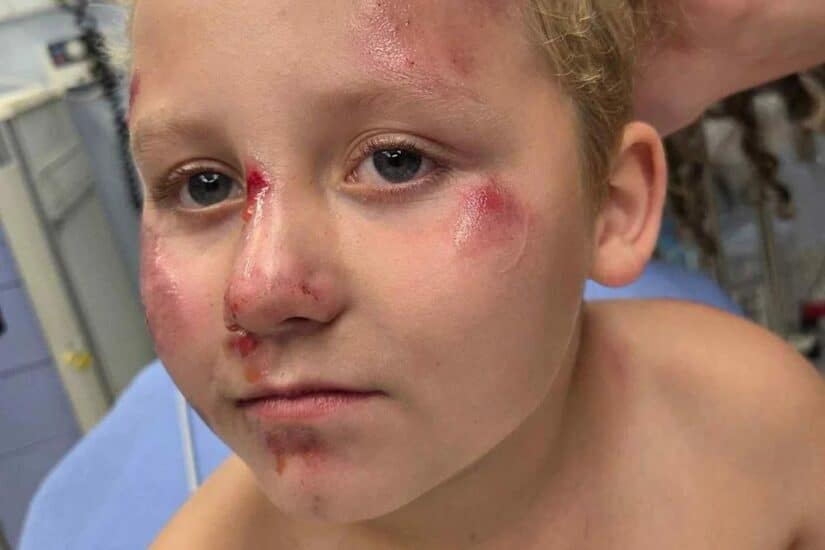
An ordinary bike ride turned into a nightmare for one Georgia family when an 8-year-old boy was struck by a car in a suspected hit-and-run. Witnesses claim the driver briefly stepped out of the vehicle before speeding away, leaving the injured child behind. This heartbreaking event not only highlights the dangers children face on the road but also raises urgent questions about accountability, driver responsibility, and the legal protections available to victims and their families.
In this blog, we will look at the known details of the case, explore Georgia’s hit-and-run laws, examine why children are particularly vulnerable, and outline the legal remedies available to families after such devastating incidents.
The Incident: A Community Shaken
The boy was reportedly riding his bicycle near his home when a vehicle collided with him. Witnesses described the shocking behavior of the driver: after stepping out briefly, the person chose to flee instead of offering help. The mother’s account, backed by community members, paints a chilling picture of indifference in a moment when compassion and responsibility were most needed.
The accident left the child injured and his family searching for answers, while the broader community struggles with the reality that such a tragedy could happen in their neighborhood.
Georgia’s Hit-and-Run Laws Explained
Georgia law is clear when it comes to accidents. Drivers must:
- Stop immediately after a collision.
- Provide their name, address, and insurance information.
- Render reasonable assistance to anyone injured.
Failure to do so, particularly in cases involving injury or death, is a felony offense. Penalties may include years in prison, steep fines, and license revocation.
The law exists not just to punish offenders but to protect victims. Leaving an injured person behind can delay lifesaving medical care. In cases like this one, the act of fleeing compounds the harm already caused.
The Emotional and Financial Toll
For the boy’s family, the impact goes far beyond the initial injury. Families dealing with hit-and-runs often face:
- Medical expenses that can quickly escalate.
- Emotional trauma for both the child and loved ones.
- Anxiety and uncertainty about whether the driver will be caught.
- The lasting effects of feeling abandoned in a moment of crisis.
Parents are forced to juggle recovery, justice, and daily responsibilities, often without knowing whether they will ever see accountability for the harm caused.
Why Children Are at Greater Risk
Children are among the most vulnerable groups in traffic incidents. Several factors contribute:
- Visibility – Their smaller size makes them harder for drivers to see.
- Unpredictability – Children are more likely to make sudden movements.
- Judgment – Young riders often misjudge traffic speeds and distances.
- Exposure – Riding bicycles near streets and intersections increases risk.
This case is a grim reminder of the responsibility drivers bear to remain alert, especially in residential neighborhoods where children are present.
Civil Remedies in Hit-and-Run Cases
While criminal penalties focus on punishing the driver, families also have options for seeking compensation through civil law. These include:
- Uninsured motorist coverage under the family’s insurance, which may apply if the driver is not identified.
- Personal injury claims if the driver is caught.
- Crime victim compensation funds offered by the state of Georgia.
Compensation may cover hospital bills, ongoing therapy, pain and suffering, and long-term care needs.
Witnesses and the Power of Community
In this case, witnesses played a critical role. Their willingness to come forward provides investigators with vital leads and supports the family’s account. Community involvement can also extend beyond the investigation, through fundraising efforts, public awareness campaigns, and calls for safer streets.
The collective response demonstrates that while one driver may have failed to act responsibly, neighbors and bystanders can still rally around the victim and family.
Public Safety Lessons
This incident is not isolated. Bicycle accidents involving children happen across the country each year. Hit-and-run cases, however, carry unique dangers by depriving victims of immediate assistance.
Steps to improve safety include:
- Traffic calming measures in residential areas.
- Education campaigns reminding drivers of their duties.
- Bicycle safety education for children.
- Strong enforcement of existing hit-and-run laws.
Supporting Families After Tragedy
For families caught in the aftermath of a hit-and-run, knowing what steps to take can feel overwhelming. Key actions include:
- Report the incident immediately to law enforcement.
- Document the scene with photos, videos, and witness contact information.
- Seek urgent medical care for the child.
- Review insurance policies for possible coverage.
- Explore legal options to ensure accountability and compensation.
Taking these steps early can help preserve evidence and provide a clearer path forward.
Moving Forward After a Hit-and-Run
Recovery after such an event is not only physical but emotional. Families must balance medical appointments, legal questions, and the emotional scars of betrayal. The road ahead may be long, but pursuing justice can provide both closure and financial relief.
The story of this 8-year-old boy is a call to action for stronger protections, more vigilant driving, and a collective commitment to safeguarding children.
Conclusion
The tragic hit-and-run involving an 8-year-old boy in Georgia has shaken an entire community and drawn attention to the need for accountability on the roads. While laws provide a framework for justice, families also need compassion, resources, and clear paths to recovery. This story serves as a reminder that protecting our most vulnerable requires vigilance, responsibility, and a commitment to justice.
